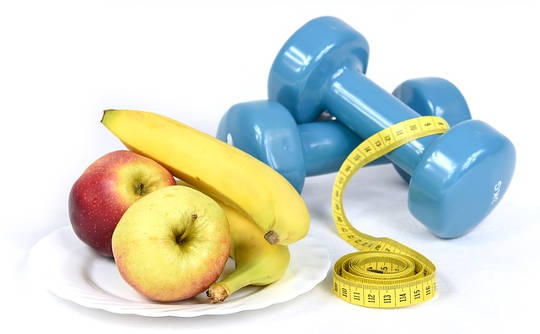
If information were the answer,
we’d all be billionaires with perfect abs.
— DEREK SIVERS
While healthy eating, regular physical exercise, stress management, and getting enough sleep constitute advice that our grandparents might have provided, we all need the tools to move from knowing to doing, from thought to belief to massive action.
The strategy to learn new skills is summarized by the acronym FAST, which was developed by memory and learning coach Jim Kwik. Here is my own paraphrasing of FAST:
F: Forget. As in, forget what you think you know. This is about starting with a clean slate, a childlike curiosity, “an empty cup.”
A: Active. As in, be an active learner. Approach new concepts with full attention and the right attitude.
S: State. As in, be in the right physical and mental state, which optimizes learning and the adoption of new concepts. This helps move them from the conscious mind to the automatic, subconscious, habit mind.
T: Teach. As in, the best way to learn something really well is to teach it to someone else. You will master the concepts of Turbo Metabolism if you think about them with the intention of explaining them to everyone you know.
By understanding our universal human needs and by focusing on the end goal of living a life of meaning and purpose, of growth and contribution, we can move toward permanent behavior change. This is my mind-body approach to health transformation.
Habits Are A Powerful Tool
According to research, habits are a powerful tool in automating certain behaviors and actions so that they can be performed by the subconscious mind, like tying your shoelaces, brushing your teeth, driving to work, and remembering the lyrics of your favorite song.
In fact, we are all creatures of routines and habits, and we become very adept at activities we do over and over again. We can complete 90 to 95 percent of our routine tasks throughout the day operating at the level of the subconscious mind.
If you have ever trained a puppy, or watched the behavior of dolphins at amusement park shows, you understand the process: a new habit is a conditioned (automatic) response that involves a cue (like a click or hand movement), an action (the dolphin jumps), and a reward (a small treat such as a dog biscuit or fish).
The same cue-action-reward sequence works with humans, too. For example, getting tired at 3:30 in the afternoon (cue) leads to grabbing a strong cup of coffee and a cookie (action), which creates a bump in energy (reward). Or on a typical Friday night (time cue), we feel the urge to go to a bar with friends (action), so we can relax while hanging out with them (reward).
The concept of habit hacking involves replacing a maladaptive or self-destructive action with a desirable one. Thus, we respond to the same cue by doing something different and then receiving a similarly satisfying reward. For instance, we could habit-hack both examples above: when our energy sags at 3:30, we could go for a brisk walk instead of ingesting coffee and a cookie; on Friday evening, we could socialize and relax by playing basketball with friends or by dancing. The goal is to set up routines and habits to help us be successful.
Training New Habits
In the words of the Greek poet Archilochus, “We do not rise to the level of our expectations, we fall to the level of our training.”
How long do you think it takes to form a habit? Many people cite twenty-one days, but that’s not enough. This time frame actually came from a plastic surgeon who said it took his patients three weeks not to do a double take in the mirror post-surgery. In fact, the average time it takes to form a new habit, according to London College University, is sixty-six days.
Thus, it’s critically important to reset your world and to keep it reset for at least two months, so that healthy habits become the default choices. You will have the best chance for success if you follow these guidelines:
* Set your ultimate goal.
* Name an observable behavior that is in line with your mission.
* Be as specific as possible; choose actions you can measure or quantify.
* Focus on actions you can reasonably achieve.
10 Actions To Optimize Your New Habit Success
Here are ten more things to keep in mind as you develop healthy habits and optimize your environment for success:
1. Substitute unhealthy actions with healthy actions: For the same cue or craving, replace an unhealthy food with a healthy one.
2. Schedule healthy habits and place reminders on your calendar. When will you stretch, move, express gratitude, or meditate?
3. Automate environments so that healthy choices are easy to make. For example, stock healthy snacks at home, in the office, and in the car. Keep gym clothes packed and ready to go. Also, did you know that using transparent glass bowls and plates increases our awareness of food quantities, helping us feel more satisfied with less food? Or that we eat 30 percent less if we use our nondominant hand? Try to work these tricks into your routine. This is the most important step. Automation leads to liberation from temptation!
4. Form a support group of family, friends, and coworkers who will help you stay on track, or quickly get you back on track, without judgment, guilt, or regret.
5. Identify cues and be aware of how you usually handle them, then see item 9.
6. Watch your language, and reword your options to limit bad choices. For example, ask yourself, “Would I prefer salad for lunch or dinner?” or “Would I rather exercise in the morning before work or in the evening after work?” Say to yourself, “Those cookies look really good, but they are not on my plan. I will have these nutritious almonds instead.”
7. Piggyback on existing habits. For example, do ten push-ups every time you brush or floss your teeth. Or take a vitamin D supplement every morning with your smoothie.
8. Develop and identify your “keystone” habits. In an arch, a keystone is the piece at the top against which all others lean, and a keystone habit can help support all our other goals. A keystone habit can be anything, but often it’s getting enough sleep and exercise. For you, it might be eating a good breakfast, getting a nice hug, having a good laugh, spending some time outdoors, hearing an inspiring piece of music. Even making the bed in the morning can be a keystone habit! When we lack our keystone, we may try to replace it with an unhealthy, ineffective alternative, like eating ice cream and cookies when we’re tired. Keystone habits keep us on track with our goals.
9. Plan for success by considering “if/then” scenarios. For example, if you’re going to a restaurant, review the menu online and know the best possible meal to order when you get there. If you are traveling and get hungry, then what will you eat? Pack healthy snacks so you can avoid all the unhealthy airport options. If you’re going to a party, eat a healthy snack beforehand and plan to politely decline wine or dessert.
10. Reward yourself and celebrate your successes with healthy nonfood rewards when you achieve milestones. These rewards could be going for a massage or a spa treatment, or going to the movies or a concert. You might even shop for new clothes that fit better because your body is looking better.
RULES TO LIVE BY
* Mind and body are closely connected and constantly eavesdropping on each other.
* You cannot change your actions without changing your mind; adopt an abundance mind-set rather than a deprivation mind-set.
* You need a support team of uplifting people — your coaches, your cheerleaders, your tribe — to help you move forward.
* Make a genuine commitment (not just a New Year’s resolution!) to be healthy.
* Be sure to take out the trash. No junk in the fridge, no worries.
* Always take your “good stuff” shopping lists to the store with you.
* Superfoods, like broccoli and Brussels sprouts, are essential to a healthy diet.
* Think of food as fuel, not as an entertaining escape.
* Set up the right environment.
* Automation leads to liberation.
Copyright ©2018 by Pankaj Vij, MD.
Reprinted with permission from New World Library
www.newworldlibrary.com.
Article Source
Turbo Metabolism: 8 Weeks to a New You: Preventing and Reversing Diabetes, Obesity, Heart Disease, and Other Metabolic Diseases by Treating the Causes
by Pankaj Vij, MD, FACP
 As the modern Western lifestyle spreads around the globe, so too does metabolic syndrome -- a cluster of symptoms that increases the risk of developing heart disease, stroke, diabetes, and other conditions. The good news: metabolic syndrome can be tamed by a sensible program of exercise, natural foods, stress management, and quality sleep. In this concise and lively book, Dr. Vij distills a mass of medical research into a simple, effective program for vibrant health. Avoiding fads and gimmicks, he provides practical advice, case studies of ordinary people, and brief sections that debunk common medical myths. By following Dr. Vij's evidence-based methods, you can manage diabetes, avoid related metabolic conditions, lose weight, and live a healthier, happier life with energy to spare.
As the modern Western lifestyle spreads around the globe, so too does metabolic syndrome -- a cluster of symptoms that increases the risk of developing heart disease, stroke, diabetes, and other conditions. The good news: metabolic syndrome can be tamed by a sensible program of exercise, natural foods, stress management, and quality sleep. In this concise and lively book, Dr. Vij distills a mass of medical research into a simple, effective program for vibrant health. Avoiding fads and gimmicks, he provides practical advice, case studies of ordinary people, and brief sections that debunk common medical myths. By following Dr. Vij's evidence-based methods, you can manage diabetes, avoid related metabolic conditions, lose weight, and live a healthier, happier life with energy to spare.
Click here for more info and/or to order this paperback book or purchase the Kindle edition.
About the Author
 Pankaj Vij, MD, FACP, has helped thousands of patients lose weight, manage chronic health conditions, and improve their physical fitness. Board certified in internal medicine and obesity medicine, Dr. Vij has been practicing medicine since 1997. Co-Founder of HealthZone Life and leader in the introduction of the HealthZone Model as a tool for health education and clinical practice, Dr. Vij has a passion for nutrition and fitness. His interests include approaches on how to slow down the aging process and optimize human performance, thereby enhancing health span, not just life span. He models a healthy lifestyle by following a low glycemic, anti-inflammatory diet, with regular physical activity, meditation and focus on sleep; (adding music and humor for good measure). For more info., visit http://healthzonelife.com/
Pankaj Vij, MD, FACP, has helped thousands of patients lose weight, manage chronic health conditions, and improve their physical fitness. Board certified in internal medicine and obesity medicine, Dr. Vij has been practicing medicine since 1997. Co-Founder of HealthZone Life and leader in the introduction of the HealthZone Model as a tool for health education and clinical practice, Dr. Vij has a passion for nutrition and fitness. His interests include approaches on how to slow down the aging process and optimize human performance, thereby enhancing health span, not just life span. He models a healthy lifestyle by following a low glycemic, anti-inflammatory diet, with regular physical activity, meditation and focus on sleep; (adding music and humor for good measure). For more info., visit http://healthzonelife.com/
Related Books
at

Thanks for visiting InnerSelf.com, where there are 20,000+ life-altering articles promoting "New Attitudes and New Possibilities." All articles are translated into 30+ languages. Subscribe to InnerSelf Magazine, published weekly, and Marie T Russell's Daily Inspiration. InnerSelf Magazine has been published since 1985.

Thanks for visiting InnerSelf.com, where there are 20,000+ life-altering articles promoting "New Attitudes and New Possibilities." All articles are translated into 30+ languages. Subscribe to InnerSelf Magazine, published weekly, and Marie T Russell's Daily Inspiration. InnerSelf Magazine has been published since 1985.

























